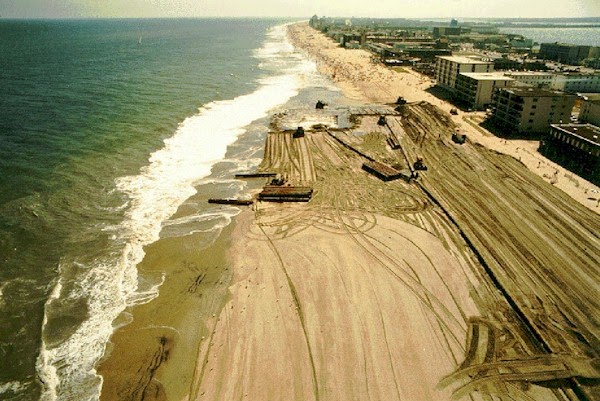Coastal erosion is a growing issue that affects a high percentage of the world's population, as coastlines are an overwhelmingly popular place to live. In the US, coastal counties contain 25% of the country's population.
In addition to the Gulf Coast US, coastal erosion evolved into a worldwide concern in coastal areas and islands as sea levels rise with the increase of carbon dioxide in the atmosphere contributing to global warming climate change. It takes place in many forms over many different types of ecosystems, including intertidal zones, sand beaches, mud flats, barrier islands, marshes, and deltas, especially biomes with fine-grained sediments that can easily be eroded in the case of coastal storms such as the hurricanes that so often hit the Gulf Coast. Below shows how Florida would be affected if sea level rose by 1 meter.
Studies within the Gulf Coast area have shown that changes in sea level tied to coastal erosion are greatest around New Orleans, Louisiana, which can reach up to 10 mm/year. East of New Orleans the rise is about 2 mm/year. West of Louisiana is in the 3-5 mm/year range; all considered very high risk. These high erosion rates are due to the "natural compaction of the Holocene deltaic sediments in the Gulf of Mexico", the natural geologic risk factor that gives the Gulf Coast the topographic features that put it at risk for coastal erosion (Erosion Hazard Vulnerability). Areas with higher coastal slope, such as the Florida Panhandle, are at lower risk than lower lying places like New Orleans and the Texas coast, which also experiences higher mean wave height.


















